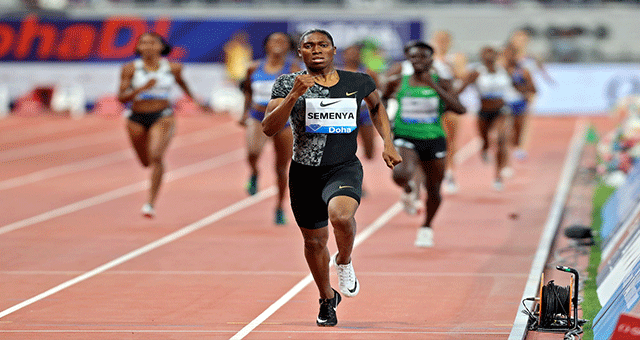Featured
Olympic champion and intersex athlete, Caster Semenya allowed to participate in men’s events – IAAF

The International Association of Athletic Federations (IAAF) has said that athletes like South Africa’s Caster Semenya are welcome to enter men’s events if they are not willing to take medicine to lower their testosterone levels.
This comes days after the Court of Arbitration for Sport in Lausanne, Switzerland, ruled in favour of International Association of Athletics Federations (IAAF) that female athletes such as Semenya, who is intersex must take testosterone suppressants like the contraceptive pill to stay under the permitted level to continue competing as a woman in any running event between the 400m and the mile.
Responding to a letter from the World Medical Association (WMA) which urged doctors not to enforce controversial new IAAF gender rules for classifying female athletes, the International Association of Athletic Federations (IAAF)warned that attempts to do so would breach ethical codes.
One of the main reasons given was that the IAAF’s research was based on “weak evidence”.
WMA president Dr. Leonid Eidelman said: “We have strong reservations about the ethical validity of these regulations. They are based on weak evidence from a single study, which is currently being widely debated by the scientific community…”
The IAAF responded with a statement on their official website, saying their research was based on evidence taken over a number of years.
“The IAAF Regulations in this matter are not based on a single study, but on many scientific publications and observations from the field during the last 15 years. All these materials were submitted to the Court of Arbitration for Sport and discussed during the hearing. The Panel has accepted the validity of this evidence and has recently decided to uphold the IAAF Regulations.”
In its statement, the WMA added: “It is in general considered as unethical for physicians to prescribe treatment for excessive endogenous testosterone if the condition is not recognised as pathological.”
To this, the IAAF responded: “We respectfully remind the WMA that while doctors should try not to over-medicalise the lives of these patients, it is important to recognise that for an adolescent raised as female and experiencing a masculinising puberty, according to international guidelines for DSD, an extensive investigation should be carried out by a cross-professional team to reach a diagnosis, and to clarify the individual’s gender identity.
“It is also important to exclude a gonadal malignancy since some 46XY DSDs are associated with an increased risk of cancer. If the individual has a female gender identity, a suitable form of treatment is recommended to lower the testosterone level, provided the patient accepts it herself. In worldwide clinical practice, male gonads are often removed, but pharmacological treatments to reduce testosterone levels are also used.”
The IAAF added that female athletes with high testosterone levels that participate in the 400m hurdles, 800m and 1 500m and mile would be welcome to compete with male athletes if they’re not comfortable taking medicine to lower their testosterone levels.
“In any case, it is the athlete’s right to decide (in consultation with their medical team) whether or not to proceed with any assessment and/or treatment. If she decides not to do so, she will not be entitled to compete in the female classification of any Restricted Event at an International Competition.
“However, she would still be entitled to compete in the male classification at any competition at any level, in any discipline, without restriction; in any ‘intersex’ (or similar) classification that the event organiser may offer at any competition at any level, in any discipline, without restriction.”
If Semenya opts not to take medicine to lower her testosterone levels, the only way for her to compete in the female classification would be, according to the IAAF:




